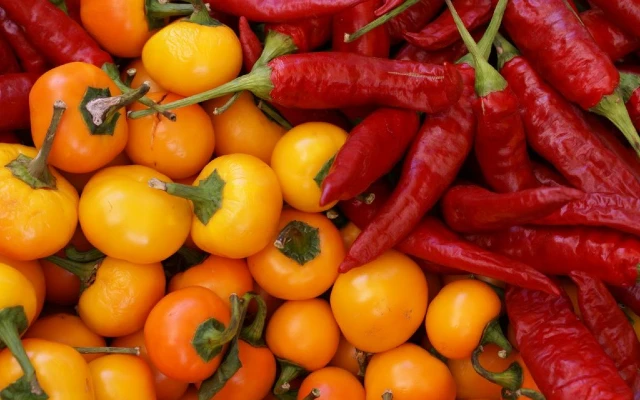
Red and Orange Vegetables Research
I’ve started investigating the benefits of different food groups. So that I can better explain how people can get the most benefit from current government eating guidance. For my first investigation, I’ve chosen the red and orange vegetables group from the latest guidelines:
U.S. Department of Agriculture and U.S. Department of Health and Human Services. Dietary Guidelines for Americans, 2020-2025. 9th Edition. December 2020.
Those guidelines describe:
Red and Orange Vegetables: All fresh, frozen, and canned red and orange vegetables or juice, cooked or raw: for example, calabaza, carrots, red or orange bell peppers, sweet potatoes, tomatoes, 100% tomato juice, and winter squash.
Also, they recommend 5 ½ cups of red and orange vegetables per week for an adult with a 2,000 calorie per day energy requirement. But there are no explanations for why this vegetable group is important. So I have started this research project. To explain the science behind red and orange vegetable recommendations.
Here, I’ve investigated the topics listed below. Then I’ll look at more related research before summarizing the key health points on Foodary.com.
Red and Orange Vegetables Research Topics
Initially, I’ve looked at studies that identify red and orange vegetables as a specific group. Later, I will extend my research to look at red vegetables and orange vegetables separately. Also, other colored vegetables.
- Eye Health and Red/Orange Foods
-
Estévez-Santiago, Rocío, Begoña Olmedilla-Alonso, Beatriz Beltrán-de-Miguel, and Carmen Cuadrado-Vives. 2016. “Lutein and Zeaxanthin Supplied by Red/Orange Foods and Fruits Are More Closely Associated with Macular Pigment Optical Density than Those from Green Vegetables in Spanish Subjects.” Nutrition Research 36 (11): 1210–21.Conclusion: lutein and zeaxanthin supplied by red/orange foods and the group of fruits (most of the fruits are red/orange or white /yellow in color), have the greatest association with MPOD [macular pigment optical density] in study participants aged 45-65y.
- Insulin Resistance & Red/Orange Foods
-
KHALILI, MOGHADAM S., Z. Bahadoran, P. Mirmiran, and F. Azizi. "The association of red, orange and yellow fruits and vegetables with the incidence of insulin resistance in adults: tehran lipid and glucose study." (2016): 97-104.Conclusion: an inverse association between dietary intakes of fruits and vegetables, red/purple, orange and yellow groups and the risk of insulin resistance in adults.
Red and Orange Vegetables Research Summary
This initial research reveals that red and orange vegetables provide health benefits for eye health and for insulin resistance. However, I have not yet found a compelling explanation of why red and orange vegetables should be isolated as a separate group from other vegetables. I find this slightly confusing as I have been aware of some benefits of consuming a variety of different colored fruits and vegetables. Yet not why red and orange deserve their own group. So I will continue to investigate this as part of a bigger project to explain the value of different food groups.

What Benefits from Red and Orange Vegetables?
Your Red and Orange Vegetables Research Topics
Which aspects of eating vegetables are you interested in? Do you suffer any illnesses where you think vegetable consumption might have effects?
Please tell me your vegetables story using the feedback form below.
Leave Red and Orange Vegetables Research to read Food Research Library Home Page.
